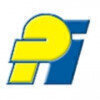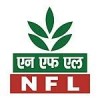Filter interviews by
National Fertilizers Graduate Apprenticeship Trainee Interview Questions and Answers
National Fertilizers Graduate Apprenticeship Trainee Interview Experiences
1 interview found
I applied via Company Website and was interviewed in Jul 2023. There were 3 interview rounds.

(4 Questions)
- Q1. Some basic questions about chemical
- Q2. Modes of heat transfer
- Ans.
Modes of heat transfer include conduction, convection, and radiation.
Conduction: Heat transfer through direct contact between particles or objects.
Convection: Heat transfer through the movement of fluids or gases.
Radiation: Heat transfer through electromagnetic waves.
Examples: Cooking on a stove (conduction), heating a room with a radiator (convection), feeling the warmth of the sun (radiation).
- Q3. Pumps and valves and fluid mechanics
- Q4. Mass transfer operation
(1 Question)
- Q1. Some basic knowledge about chemical engineering
Interview Preparation Tips
Can apply for an apprentice program
Top trending discussions






Interview questions from similar companies

I applied via Referral and was interviewed in Sep 2020. There was 1 interview round.
Interview Questionnaire
1 Question
- Q1. General information, production information, parameters, safety information, industrial safety permit, chemical Information,plant managing,etc.
Interview Preparation Tips

I applied via Walk-in and was interviewed before Oct 2020. There were 3 interview rounds.
Interview Questionnaire
2 Questions
- Q1. Basically MSGL reactors,vacuum pumps, ejector system,centrifugal pumps,detailed engineering.
- Q2. Preventive maintenance.
Interview Preparation Tips

I applied via Naukri.com and was interviewed in Jul 2020. There were 3 interview rounds.
Interview Questionnaire
2 Questions
- Q1. Rallis is My start Up company .My job plat form and it's one of best company for freshers
- Q2. In interview prefer a basic questions of chemistry and as possible as to prefer a basic use industrial chemicals basic information
Interview Preparation Tips
They have how to work etc....

I applied via Naukri.com and was interviewed before Oct 2020. There were 4 interview rounds.
Interview Questionnaire
2 Questions
- Q1. What are you learn last organization.
- Q2. You took the growth of the last organization, what did you do special.
Interview Preparation Tips

Mechanical Maintenance Engineer Interview Questions & Answers
Aarti Industriesposted on 5 Sep 2021
I applied via Naukri.com and was interviewed in Mar 2021. There were 3 interview rounds.
Interview Questionnaire
2 Questions
- Q1. Vacuum pumps
- Q2. Centrifugal pumps
Interview Preparation Tips

I applied via Naukri.com and was interviewed in Jul 2021. There was 1 interview round.
Interview Questionnaire
4 Questions
- Q1. Mechanical seal parameter?
- Ans.
Mechanical seal parameter refers to the specifications and characteristics of a mechanical seal used in rotating equipment.
Mechanical seal parameters include seal face material, seal face design, spring type, and secondary sealing elements.
Seal face material can be ceramic, carbon, or tungsten carbide depending on the application.
Seal face design can be single or double, balanced or unbalanced, and with or without a pu...
- Q2. Squreness, concentracity, run out.
- Q3. How can install mech seal on reactors?
- Ans.
Mechanical seals can be installed on reactors by following a specific procedure.
Ensure the reactor is clean and free of debris
Select the appropriate mechanical seal based on the reactor's specifications
Install the seal according to the manufacturer's instructions
Check for leaks and make necessary adjustments
Perform regular maintenance to ensure the seal continues to function properly
- Q4. First, check squareness, second concentracity, and last run out
Interview Preparation Tips

I applied via Referral and was interviewed in Oct 2021. There was 1 interview round.
Interview Questionnaire
1 Question
- Q1. Job profile, safety
Interview Preparation Tips

(2 Questions)
- Q1. Tell about your self
- Q2. What best you have done
Interview Preparation Tips

Mechanical Maintenance Engineer Interview Questions & Answers
Coromandel Internationalposted on 26 Jun 2023
I applied via Naukri.com and was interviewed before Jun 2022. There were 3 interview rounds.

(1 Question)
- Q1. They asking questions from experience industry like as chemical and refinarye
(1 Question)
- Q1. As per CV they asking questions
Interview Preparation Tips
National Fertilizers Interview FAQs
Tell us how to improve this page.
National Fertilizers Interviews By Designations
- National Fertilizers Instrument Engineer Interview Questions
- National Fertilizers Graduate Apprentice Trainee Interview Questions
- National Fertilizers HR Executive Interview Questions
- National Fertilizers Assistant Technician Interview Questions
- National Fertilizers Internship Trainee Interview Questions
- National Fertilizers Electrical Engineer Interview Questions
- National Fertilizers Chemical Engineer Interview Questions
- National Fertilizers Lab Assistant Interview Questions
- Show more
Interview Questions for Popular Designations
- Apprenticeship Trainee Interview Questions
- Apprenticeship Training Mechanical Engineer Interview Questions
- Apprenticeship Maintenance Engineer Interview Questions
- Diploma Apprenticeship Assistant Interview Questions
- Apprentice Interview Questions
- Technician Apprenticeship Interview Questions
- Apprentice Trainee Interview Questions
- Graduate Apprentice Trainee Interview Questions
- Show more
National Fertilizers Graduate Apprenticeship Trainee Interview Process
based on 1 interview
Interview experience
Interview Questions from Similar Companies

National Fertilizers Graduate Apprenticeship Trainee Reviews and Ratings
based on 9 reviews
Rating in categories
|
Assistant Manager
82
salaries
| ₹11 L/yr - ₹19.5 L/yr |
|
Engineer
26
salaries
| ₹9.3 L/yr - ₹13 L/yr |
|
Graduate Apprentice Trainee
22
salaries
| ₹0.6 L/yr - ₹3 L/yr |
|
Apprentice
19
salaries
| ₹0.9 L/yr - ₹3 L/yr |
|
Mechanical Engineer
18
salaries
| ₹9 L/yr - ₹18 L/yr |

Aarti Industries

UPL

Coromandel International

PI Industries
- Home >
- Interviews >
- National Fertilizers Interview Questions >
- National Fertilizers Graduate Apprenticeship Trainee Interview Questions












